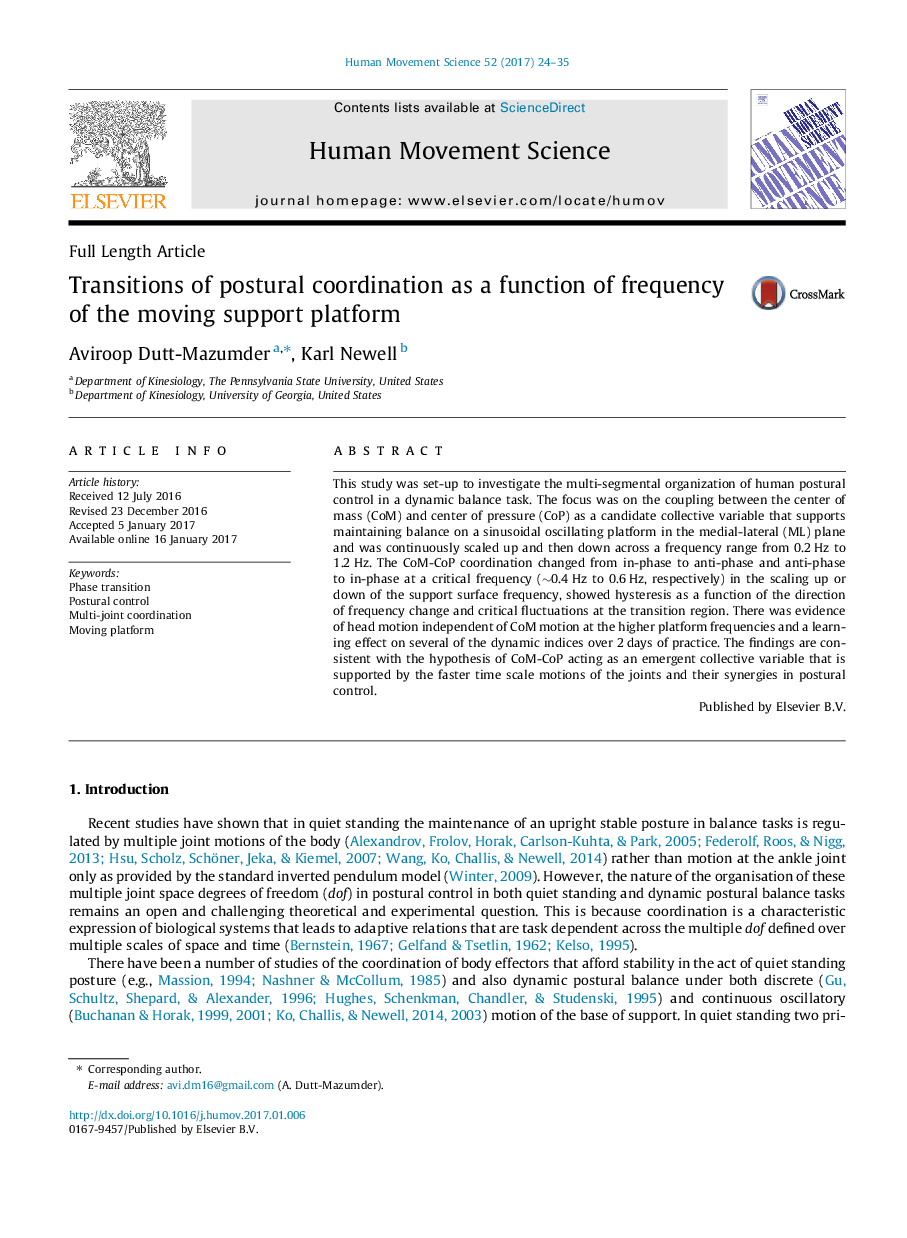| Article ID | Journal | Published Year | Pages | File Type |
|---|---|---|---|---|
| 5042052 | Human Movement Science | 2017 | 12 Pages |
This study was set-up to investigate the multi-segmental organization of human postural control in a dynamic balance task. The focus was on the coupling between the center of mass (CoM) and center of pressure (CoP) as a candidate collective variable that supports maintaining balance on a sinusoidal oscillating platform in the medial-lateral (ML) plane and was continuously scaled up and then down across a frequency range from 0.2Â Hz to 1.2Â Hz. The CoM-CoP coordination changed from in-phase to anti-phase and anti-phase to in-phase at a critical frequency (â¼0.4Â Hz to 0.6Â Hz, respectively) in the scaling up or down of the support surface frequency, showed hysteresis as a function of the direction of frequency change and critical fluctuations at the transition region. There was evidence of head motion independent of CoM motion at the higher platform frequencies and a learning effect on several of the dynamic indices over 2Â days of practice. The findings are consistent with the hypothesis of CoM-CoP acting as an emergent collective variable that is supported by the faster time scale motions of the joints and their synergies in postural control.
